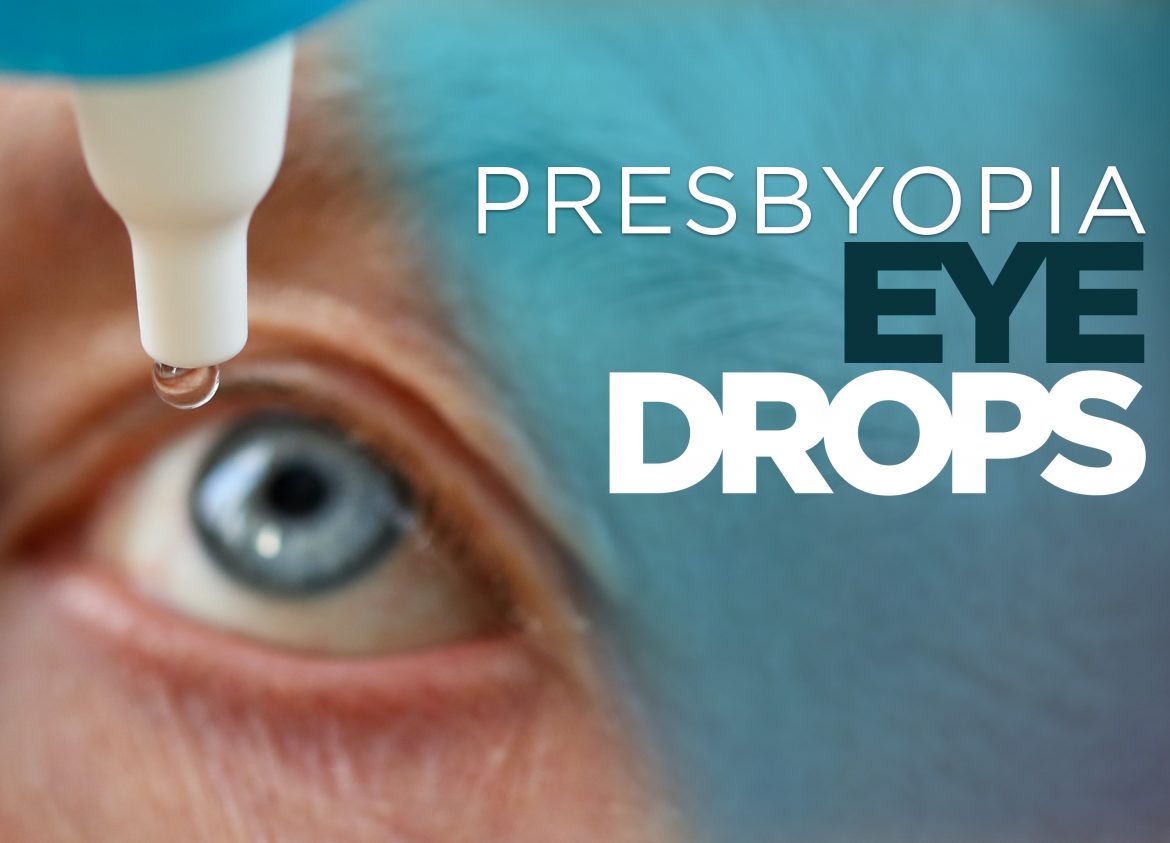6265 total views , 6 views today
You may rely on eye drops for a variety of reasons: to treat allergies, relieve dry eyes, treat minor infections, and possibly, to help minimize the effects of glaucoma. As shocking as it may sound, you can add treating presbyopia to the list.
The development of presbyopia eye drops is great news for the nearly two-billion people who suffer from the condition.
What is presbyopia?
Presbyopia is the age-related hardening of the lenses of the eyes, which causes the ability to focus on up-close objects to become progressively worse. Estimated to affect over one-third of the population, presbyopia usually begins to develop around age 40.
If you’re just beginning to realize its effects, you’ll find yourself pushing things further away from your eyes to try to focus on something you’re attempting to read. Presbyopia is typically corrected with reading glasses, prescription glasses, or contact lenses, or LASIK surgery.
Presbyopia-correcting eye drops
The first presbyopia-correcting eye drops were put on the market at the end of 2021. They have demonstrated to be successful in correcting near-vision impairment resulting from the hardening of the lens of your eyes.
It’s important to note, the corrective eye drops are not designed as a permanent fix for presbyopia. They’ll provide a temporary-use product that will help you focus on up-close objects without the assistance of prescription or reading glasses.
These eye drops could be a good option for people who are not ready (or interested in) LASIK surgery but also rather not wear glasses or contact lenses.
Two types of presbyopia-correcting eye drops
Two distinct types of eye drops for treating presbyopia are in development:
Miotic eye drops
The two eye drops that are currently available, Vuity and Qlosi, are both miotic eye drops.
Miotic eye drops reduce the effects of presbyopia by causing the pupil to constrict, creating a “pinhole effect” (similar to decreasing the aperture in a camera). Depth of focus increases as the pupil constricts, which serves to improve the ability of the eye to focus up close while not affecting the ability to see at a distance.
Again, miotic eye drops for presbyopia provide temporary relief. Initial research into the effectiveness of miotic eye drops indicates they take roughly thirty minutes to become fully effective and last for up to eight hours.
Lens-softening eye drops
This solution softens your lenses so they’re better able to adjust to focus on objects at different distances. Lens-softening drops aren’t able to completely reverse the effects of presbyopia, that is, restore the flexibility of the lenses. However, early results indicate they appear effective in softening the lens enough to significantly improve the eye’s ability to focus.
Lens-softening eye drops are still in development. In trials, they have been shown to potentially reverse aging and hardening of the lens by up to 10 years.
Common questions about presbyopia eye drops
Will it help to use BOTH types of eye drops?
For some, a combination of both types of eye drops may provide better near-vision. For others, one kind may be more effective. While there are hopes that using a combination of both types of drops will improve near vision even more, further research needs to be completed before arriving at a definitive conclusion.
Are there any side effects?
Some people report developing a headache after using the drops. Others have reported reduced vision at night in dim light. Be sure to reach out to your optometrist if these side effects are an issue for you.
Will insurance cover the costs of eye drops?
Currently, presbyopia eye drops are generally not covered by insurance.
Which eye drops are currently available?
There are currently two types of presbyopia eye drops available: Vuity and Qlosi. These two eye drops are both FDA-approved, and there are also several other candidates in the pipeline. Some of these candidates are also getting close to launching. For example, LNZ100 and LNZ101 from Lenz Therapeutics and PRX-100 from Presbyopia Therapies are currently in clinical trials.
Note: Louise Wood contributed to this article.


